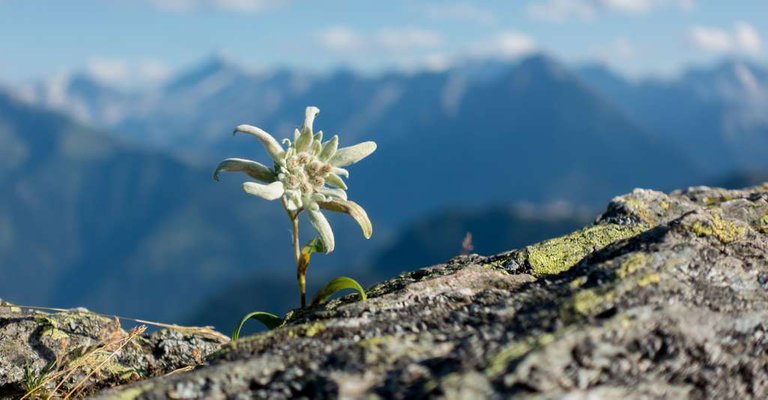
Everyone knows the Edelweiss (Leontopodium alpinum)Star-shaped mythical flower, edelweiss is one of the most famous mountain plants, emblematic plant of the high mountain considered rare and inaccessible, used for a long time for its medicinal virtues.
Edelweiss is typically an alpine plant whose ecological optimum is on the alpine stage,that grows at an altitude of 2,000 to 3,000 meters. Despite a very short season at these altitudes, it blooms.
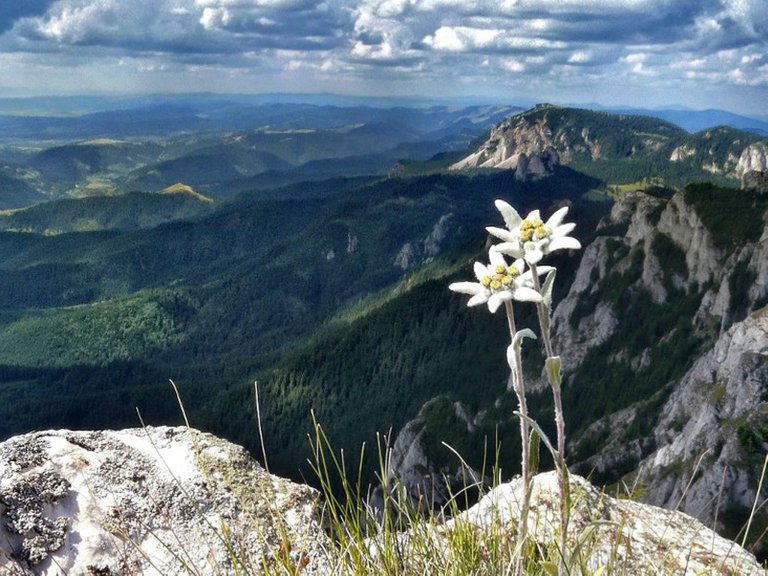
This flower has developed very effective defenses to withstand freezing temperatures, strong winds and a blazing sun,
The name "edelweiss" is formed from the German words "edel" meaning noble and "weiss" meaning white,This name was given to him in 1784.
This flower also bears many names pictured in the common language: silver star, star of glaciers, cotton starry, queen of glaciers or immortal snow ... Its botanical name "Leontopodium" means meanwhile "foot lion".
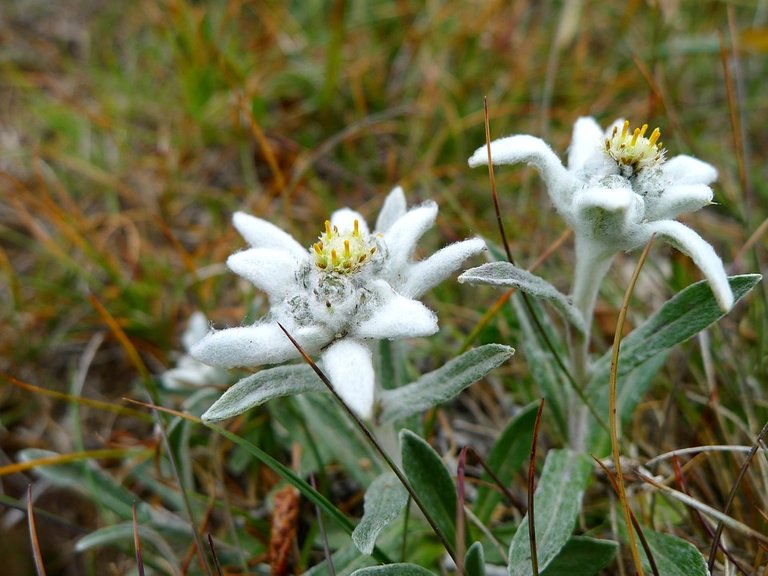
As an alpine plant, Edelweiss has a number of remarkable adaptations to the extreme living conditions that characterize high altitude. First of all, its white hair down which traps the air forms an insulating layer saturated with water which, on the one hand, protects the vegetative apparatus from the sometimes very important daily temperature differences (on a southern slope and to 2500 meters, the temperatures can oscillate between -10 ° C night and 40 ° C during a sunny day) and, on the other hand, limit the leaf transpiration in dry weather. Then, its small size (between 8 and 20 cm high) allows it to benefit during the winter of the thermal protection offered by the snow cover. The white hairs, which strongly reflect the light rays, have a high albedo, which is an adaptation to the strong insolations.
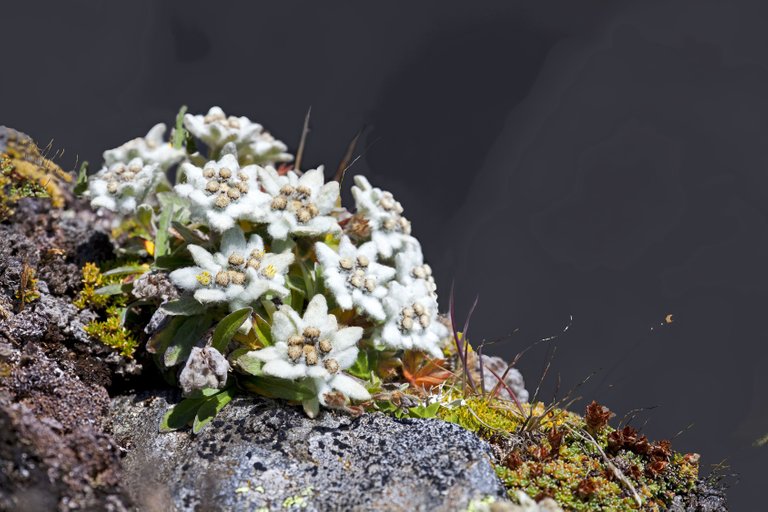
The synthesis by the plant of many anti-oxidant molecules trapping free radicals is also an adaptation to UV radiation insofar as they, by breaking biological molecules (nucleic acids, proteins, lipids), create toxic oxygen free radicals for the cells. In addition, living conditions at high altitude are a priori not very favorable to reproduction of alpine plants.
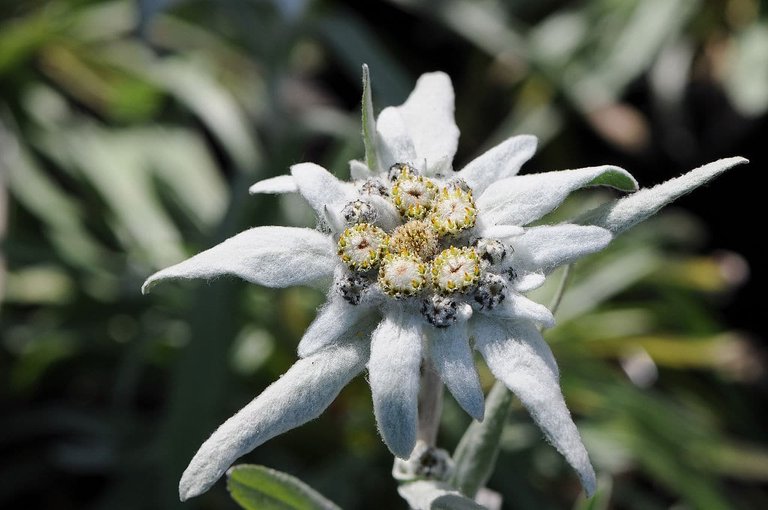
 Flower used in medicine
Flower used in medicine
previously edelweiss occupied the shelves of pharmacists and herbalists. Because this small white flower was known for its anti-inflammatory properties and also used to treat intestinal disorders of cows and sheep that lived in the pastures. This tradition has not been completely lost, since in the Swiss Alps edelweiss is still cultivated for pharmacology in order to integrate it with anti-inflammatory or anti-diarrheal preparations.
 Use of edelweiss in cosmetics
Use of edelweiss in cosmetics

L'edelweiss constituant une plante protégée menacée de disparition dans les années 1970, celle qui est utilisée en cosmétique n'est pas sauvage, elle est cultivée, souvent en bio, en Suisse. La marque Pure Altitude utilise l'édelweiss comme actif principal de la totalité de ses soins. Et ce n'est pas un hasard, l'edelweiss a des propriétés antiradicalaires exceptionnelles qui permettent d'agir sur la fermeté du visage mais aussi une forte concentration de polyphénols, des anti-oxydants naturels qui permettent de lutter contre le vieillissement. Il a aussi des vertus protectrices et adoucissantes pour la peau. Chaque pot de crème contient l'équivalent d'une fleur pour profiter au mieux des avantages anti-âge et protecteurs de l'edelweiss.
 Characteristics of edelweiss (Leontopodium alpinum)
Characteristics of edelweiss (Leontopodium alpinum)
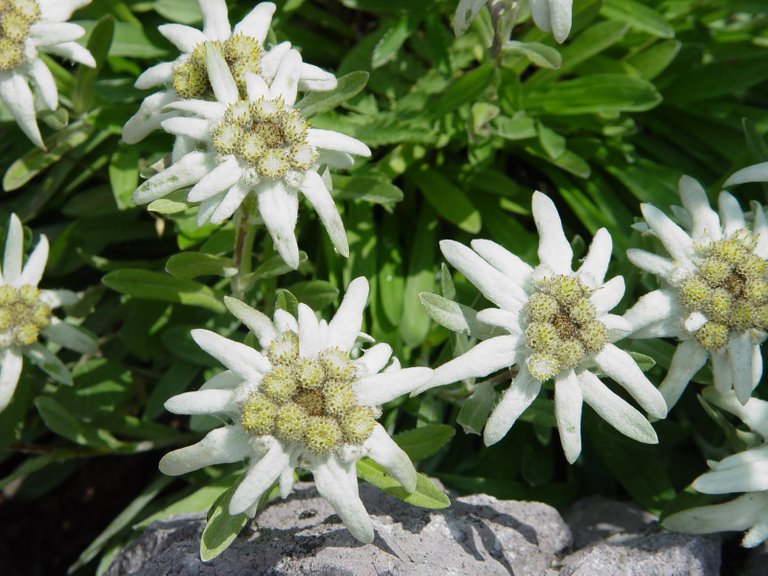
 Family: Asteraceae, also called Compounds.
Family: Asteraceae, also called Compounds.
 Flowering period: from April to July.
Flowering period: from April to July.
 Leaves and flowers: felted with woolly white hairs; star-shaped inflorescence; a flower head;
Leaves and flowers: felted with woolly white hairs; star-shaped inflorescence; a flower head;
 flower color: white.
flower color: white.
 Exposure: full sun.
Exposure: full sun.
 Soil type: well drained; mixture of potting soil and gravel; neutral to alkaline.
Soil type: well drained; mixture of potting soil and gravel; neutral to alkaline.
 Interesting information about Edelweiss flower
Interesting information about Edelweiss flower

Because of the beauty of edelweiss and the many legends it is the subject of, its wild harvest has become very important, which endangers this plant. Today, edelweiss is partially protected. In the Hautes-Alpes, its collection has been totally prohibited in six communes since 1993 and tolerated with limitation on the rest of the territory.
Laws that prohibit the right to pick this flower in most areas where it is found in the wild.The plant is supposed to have anti-aging properties.
To prevent it from disappearing, Edelweiss has been planted in accessible areas, especially at lower altitudes.
Edelweiss is grown in Switzerland for its cosmetic virtues.
source: http://www.flowermeaning.com/edelweiss-flower-meaning/
https://dengarden.com/gardening/Skin-Benefits-of-Edelweiss-the-Alpine-Plant
http://www.gerlindenaturals.com/blog/the-story-of-the-edelweiss-noble-white.html
Thank you for stopping by, I hope you enjoyed. Please share your thoughts below and comment on what you think :]
Best regards,🌺🌺🌺


nice